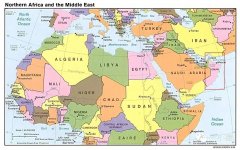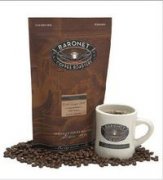Water Quality Index Affects Coffee Flavor
Even water with the same TDS contains different components of soluble solids, so is it possible to be the same in flavor? The problem may come back to the minerals themselves. Because there are many metal cations and anions in the water, the common salty taste is mainly sodium ions. According to the periodic table, alkaline metal ions similar to it can pass through ion channels and produce salty ions, such as lithium or potassium ions. However, the higher the cycle, the less salty and slightly bitter.
The common salty substances are NaCl, KCl, NaI, NaNO3, KNO3 and so on. In addition, if the alkaline-earth divalent cations of calcium ions pass through the ion channels that produce salty taste, they produce not salty, but bitter taste, among which magnesium ion produces the strongest bitter taste. In addition, it will have a sweet taste if it contains borax and copper sulfate. Since there are so many kinds of ions in the water, it is possible to bring out sour, sweet, bitter and salty tastes, it is obvious that the water with different TDS contents must be different in taste, so it is quite complicated.
What is more curious is at what concentration of these ions will cause us to produce the above taste? So in 1955, Coffee Brewing Center did some research and investigation on the water quality of brewing coffee. Interesting experiments. They selected some common substances in the water and asked people to do cup tests on substances of different concentrations in a way similar to the current triangular cup test. Take calcium ion Ca2+ as an example: the researchers mixed different concentrations of Ca2+ aqueous solution with distilled water, which were 62, 125, 188 and 250 ppm, respectively. There are three cups of each concentration (the arrangement of these three cups may be that two cups contain this concentration of Ca2+ and the other is water, or two cups of water and one cup of Ca2+), and then invite at least 18 people to take part in the cup test, including men and women, smokers and non-smokers, all members are professional food tasters, and use their correct answers to identify the differences between the three cups as the minimum concentration that can be detected.

As shown in the table above, only 9 out of 20 people can be detected when the Ca ion concentration is 62 ppm, with a correct rate of 45%, while when the concentration reaches 250 ppm, the correct rate can reach 90%. Then, by presenting the correct data in the way of mapping, the regression curve can be calculated, and the minimum detectable concentration is defined as the minimum detectable concentration Threshold concentration of the substance with 50% accuracy.

(Figure 1. Take calcium ion as an example, the concentration of 50% correct rate is about 125ppm, so the Threshold concentration of calcium ion is 125ppm)
To sum up, when the calcium ion is less than 125 ppm, the probability of it being drunk is less than 50%. What about the concentration of calcium ions that will be detected in coffee? The same method, brewing coffee with different concentrations of calcium ions, the method and detection principles are the same as above. Thus, the minimum detectable concentration in coffee can also be measured. As a result, the detected concentrations of a variety of different minerals in water and coffee are confirmed.
The above studies focus on the effects of a single substance on taste and coffee brewing, but if you add these substances together, what do you think? then return to the survey conducted by SCAA in the previous article. A TDS of 150 may be a good consensus. But don't stick to this data. after all, the composition of water varies from place to place, and its special ingredients will also affect the extraction of coffee (recent scientific studies have shown that magnesium ions at high concentrations can increase the extraction rate and improve the flavor of coffee). Then the taste will be different.

Important Notice :
前街咖啡 FrontStreet Coffee has moved to new addredd:
FrontStreet Coffee Address: 315,Donghua East Road,GuangZhou
Tel:020 38364473
- Prev

World Map of Coffee beans-- introduction of 53 coffee producing areas in the world
twenty-one. Venezuela oil was once considered the main export of Venezuela (Venezuela). Although coffee trees were introduced from Martinique in 1730 and Venezuela, coffee production was almost abandoned at the height of the oil industry. Recently, coffee plantations have begun to recover, with original Tipica and bourbon coffee trees and new plantations
- Next

Introduction to the practice of Wei Zexi coffee beans and fine coffee beans
Consumers are getting used to this, so when steamships shorten the journey time, coffee producers find that consumers still want beans of the same color and taste that are affected by long trips. In order to recreate the flavor of the original coffee, the monsoon process was used. Monsoons occur in southwestern India in May and June every year, so
Related
- Does Rose Summer choose Blue, Green or Red? Detailed explanation of Rose Summer Coffee plots and Classification in Panamanian Jade Manor
- What is the difference between the origin, producing area, processing plant, cooperative and manor of coffee beans?
- How fine does the espresso powder fit? how to grind the espresso?
- Sca coffee roasting degree color card coffee roasting degree 8 roasting color values what do you mean?
- The practice of lattes: how to make lattes at home
- Introduction to Indonesian Fine Coffee beans-- Java Coffee producing area of Indonesian Arabica Coffee
- How much will the flavor of light and medium roasted rose summer be expressed? What baking level is rose summer suitable for?
- Introduction to the characteristics of washing, sun-drying or wet-planing coffee commonly used in Mantenin, Indonesia
- Price characteristics of Arabica Coffee Bean Starbucks introduction to Manning Coffee Bean Taste producing area Variety Manor
- What is the authentic Yega flavor? What are the flavor characteristics of the really excellent Yejasuffi coffee beans?

